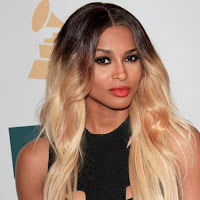If you're like me and were actually born early to mid 90s and beyond, you're probably not even completely sure what a perm is. Short for permanent wave, a perm involves the use of chemicals to break and reform the bonds of the hair. The hair is washed and wrapped on a perm rod and waving lotion is applied with a base. This solution creates a chemical reaction that softens the inner structure of the hair by breaking some of the cross links within and between the protein chains of the hair. The hair swells, stretches and softens, then molds around the shape of the perm rod.
The practice of perming hair first began in Europe in the late 19th century. After much trial and error for a couple of decades, perming hair was finally safe and boomed in popularity in France during World War I. Many women cut their hair short, then had it permed into semi-loose curls or large waves that were very tight to the head. This was both a political and fashion statement, showing society that women were tough and could handle taking on men's work, and even though their loved ones were at war, their appearance did not have to suffer for it. This style then made it's way to America just after the war and became the primary women's hairstyle of the "Roaring 20s."
 |
| Here is an example of the permed hairstyle that was popular in the Roaring 20s. |
"When I was a little girl, my mother and her sister used some sort of hot comb to create gentle waves on their full, shoulder-length hair for special occasions, or if we had enough money at the time, they would have it done by a hairdresser. It looked like this." recalls my 70-year-old grandmother Josie Garcia, pointing to this very picture of Liz Taylor on my laptop screen. My 71-year-old grandfather nods his head in confirmation, as his mother did the same, and him and my grandmother have known each other since they were small children. He was born in November 1941, and she in December 1941. They are my go-to primary sources for all that was the 40s, 50s, and 60s.
The perm's popularity faded into the 50s, replaced with ponytails, bangs, updos, and half-up half-down variations. Curls were still fashionable, but not so much the "perm" look. It was not until the 1980s that this style came back with a BANG, with a new kind of look for the perm. Curls were not spiraled, but kinky and very small with A LOT of volume. Below are some examples of famous celebrities who inspired and rocked the 80s rendition of the perm:
| Madonna in "Like a Virgin" 1984 |
| Sarah Jessica Parker mid 1980s |
"Getting my first perm is what made me want to enter the hair industry," says Martha Zamago, hairdresser and salon owner of San Antonio. "I was 17, and was fascinated at how the chemicals completely changed the structure of my hair, and it lasted for months! Until that time, I just had straight hair, and didn't think I could do something like this. After my first perm, I went back several times to re-perm it and experimented with different cuts, loving how each cut gave my hair a complete transformation, mostly because of the perm!"
As we can see, the perm has evolved over the last few decades. Now, there are many ways to perm hair. The exact shape and size of the final curls depends on several factors, including:
- The shape of the rods used for the treatment: Narrower rods produce tighter curls, and the curvature of the rods affects how the curls rest against the head.
- The strength of the solution used to break the bonds keeping the hair's natural shape: The stronger the solution, tighter and stronger the curl.
- The time the solution is allowed to rest on the hair before being rinsed: Longer durations will break more bonds and result in a curlier style.
- The way hair is rolled onto the rods: A vertical roll with long hair creates a spiral perm with ringlets, while a tighter horizontal roll brings curls closer to the head.
When properly done and cared for, a permanent wave can last 4-6 months depending on the hair's length, daily treatment, and environmental factors. While this isn't exactly a "permanent" style, then, it is still a drastic improvement for individuals who normally struggle with curling irons or other techniques every few days.
The perm has not made a true comeback since the 80s, but with the creativity and science behind the hair industry today, maybe it will in an even bigger, better, crazier way.
The perm has not made a true comeback since the 80s, but with the creativity and science behind the hair industry today, maybe it will in an even bigger, better, crazier way.



